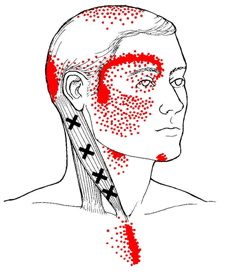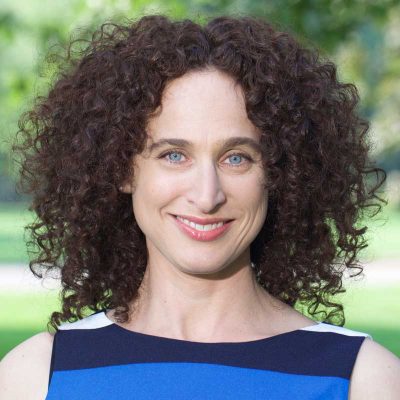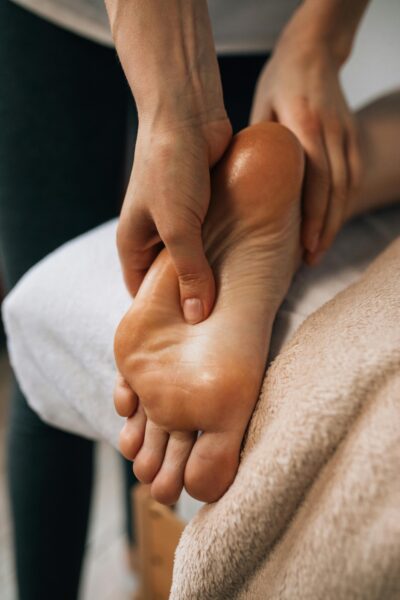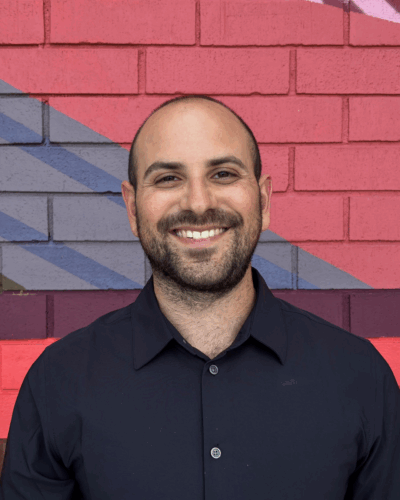
Another Tool for the Toolbox
Sometimes patients ask, why don’t you stick needles where it hurts? One theory of acupuncture treatments is you never want to irritate an already upset area of the body. We go to the areas of the body that are healthy to treat the areas that are sick. This is one way we address injury or illness. Another way is the exact opposite: we go directly to the epicenter of pain to help decrease pain and alert the immune system to help heal the body. This is a great tool. We as practitioners evaluate the patient and decide which method, or combination of methods, is best for the patient.
Recently, I attended an education seminar in Neuro-Functional Acupuncture. This type of acupuncture is similar to trigger point needling, or dry needling. These types of treatments are primarily focused on musculo-skeletal disorders; because the treatments create physiological changes in the body, they can also have a great effect on not only acute injury, but also on chronic musculo-skeletal pain and dysfunction, organ pain, cardiovascular, gastrointestinal, respiratory, gynecological, and inflammatory disorders.
The development of this style of acupuncture has its basis in the Gate Control Theory of pain. Developed in 1965, this theory first introduced the idea that the experience of pain is not just a linear process. Instead, pain is the byproduct of a process of information traveling to the spinal cord through large and small nerve fibers. Before the experience of pain is transmitted to the central nervous system/brain, these neural impulses signal pain from the peripheral nervous system and then experience modulations, or changes in the spinal cord by a gate-like mechanism. The goal of Neurofunctional Acupuncture is to change the pain message and to speed up the healing process.
Neurofunctional Acupuncture is a three part process that blends the use of motor and trigger point acupuncture at the local site of pain (this affects functional and dysfunctional patterns of muscles and structural movement), with corresponding acupuncture points along the spinal column, and the addition of acupuncture points used in traditional Chinese medical theory.
Local acupuncture points at the site of pain are chosen for their ability to stimulate nerves at neuro reactive sites. These points can be stimulated manually or with the addition of electricity, also known as electric stimulation, or “e-stim”. The local needles are inserted into “trigger points” along the belly of the muscle where the pain is experienced or the muscle is palpably tight. Trigger points often times feel like peas, nodules or ropy bands in the affected muscle. Trigger points cause predictable pain patterns in the body and often times, when needled, the muscle contracts upon insertion. When a muscle fully contracts, the opposite is a complete relaxation that sets the muscle to a neutral position and allows the body to structurally move through its normal range of motion (ROM). When electricity is added to the tip of the needle the muscle will continuously contract. Typically, electricity is left turned on for ten minutes until the trigger points have been de-activated. Interestingly, nearly seventy percent of acupuncture points overlap with trigger points! Even more interesting, one study showed acupuncture points are located at sites of the richest nerve innervation and highest density of nerve endings. Having active trigger points (and contracted muscles) can cause pain, muscle weakness, poor blood supply to the area, inflammation and reflex dysfunction. Deactivating these points provides excellent pain relief. Contraction or partial contraction of a muscle group usually protects an injured or dysfunctional area.
Neurofunctional Acupuncture takes the pain relief process one step further by including points at the spinal column. The points selected along the spine are chosen for their nerve root and its correspondence to the muscle innervation. Sensory information is transmitted to several brain regions, including those responsible for pain perception.
Every tool we gain provides another layer of comprehensive care for our patients. Our goal is to administer treatments that integrate several modalities and return you to overall health and vitality. Come experience a treatment today!
The Acupuncture Clinic of Boulder practices collaborative care. We work together to help you heal. Come experience treatments with Cassandra Krug, L.Ac., Dipl. O.M., Tiffany Bilthouse L.Ac., and Erin Pass, L.Ac., Dipl. C.H. We offer acupuncture, Chinese herbs, and dietary counseling. Call 303-665-5515 for your appointment.
by Cailey Halloran, L.Ac., Dipl. O.M.



